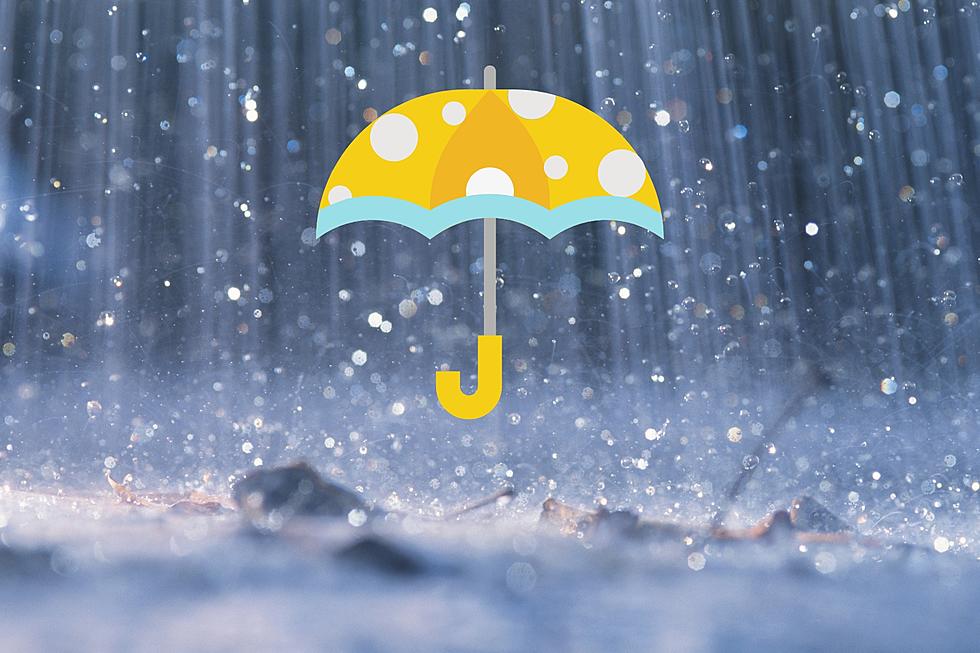
High tides, big problems: NJ ranks #1 for coastal flooding threat
As residents along the Jersey Shore know well, impacts from tidal flooding range from inconvenient to devastating. Storm surge of just a couple feet of water rise can lead to widespread road closures and significant property damage.
Usually, such flooding concerns accompany a major storm like a hurricane or nor'easter, packing strong on-shore winds that push ocean water toward the NJ coast. However, the occurrence of non-storm related flooding, or "sunny day flooding" events, is also alarmingly on the rise.
Report: NJ is #1
This is not a list for which we want to win the top spot. But it's really not surprising. According to a study from LendingTree, of all the states in the U.S. that have a coastline, New Jersey is the state most at risk of coastal flooding. More broadly, the report concludes that East Coast states have far greater potential for economic impact due to coastal flooding than the Gulf or the West.
I have seen other analyses that put New Jersey in the top 5 for flooding vulnerability. But never in the top slot. This report is unique as it focuses specifically on the economic impacts of potential flooding, instead of solely looking at geography, history, policy, etc.
For the record, these "sponsored by" reports and rankings are often bogus clickbait. (I get several such pieces of garbage in my email inbox every single day.) This one is different though, as it does relate to LendingTree's core business. And, in my professional opinion, the data, the methodology, and the results make sense.

Why?
LendingTree's math takes into account three Federal Emergency Management Agency (FEMA) National Risk Index (NRI) variables:
—Area exposed to coastal flooding risk
—Expected annual building value loss
—Expected annual population equivalence.
Separately, they also looked at the number of coastal flood events from a historical time period to a more recent one.
New Jersey finishes 1st overall, given the vulnerability of our coastline and the potential for economic loss due to catastrophic flooding. For similar reasons, New York finishes 2nd in the rankings. Louisiana, Florida, and Virginia round out the top five.
Even though Florida has about 6x times the land area susceptible to coastal flooding compared to New Jersey (758 square miles vs. 117 square miles), New Jersey's expected annual building loss is 20x that of Florida's ($605M vs. $30M). In fact, NJ's potential losses are more than 10x those of New York ($605M vs. $59M).
I am sure all those giant shore homes that popped up in the post-Sandy era contribute to New Jersey's high dollar value. Plus the rising value of goods and services and vehicles and infrastructure and everything else that could be suddenly swept out to sea by a massive coastal storm.
Historical Comparison
The report also compared the number of flooding events from 1990-2009 to those from 2010-2022.
Sandy Hook, N.J. ranks 14th on the list, increasing from an average of 4.2 coastal flood events per year in the early time frame to 10.5 per year in the later one. That is a change of 152%. Atlantic City is 23rd, almost doubling from 5.2 flood events per year to 10.1.
Several Gulf Coast states outpace New Jersey in this category, with Mayport, Florida showing an incredible 771% change in flooding recurrence.
Note: I am skeptical about this part of the analysis. The years chosen seem arbitrary, with the earlier comparison period lasting 19 years and the more recent period covering just 12 — why the difference? And why select 2010 as the break point, with no explanation? (Especially when so many "big" storms occurred in the 2010s — Irene, Sandy, Blizzard of 2016, etc.) Also, all stations analyzed have available data going back to 1950 — why not use more years of record?
Tips for Homeowners
The best way to ensure your life and property are safe during any natural disaster is to be proactive in preparation and mitigation efforts. Coastal resiliency is a term that applies to private residences too — those that are raised and/or hardened against water inundation will fair better, especially during minor or moderate water rise.
Flood insurance is an important consideration too. If you are considering buying a home in a coastal area, know whether flood insurance will be required. And be sure to calculate those premiums into your PITI (principal, interest, taxes, insurance) budget.
You may consider purchasing a flood insurance policy, even if your mortgage lender does not specifically require it. According to LendingTree, 20 to 25 percent of flood insurance claims come from outside high-risk areas. It is usually cheaper in low- and medium-risk areas too.
Finally, you can shop around. Most homeowners purchase flood insurance through the National Flood Insurance Program, managed by FEMA. But you can compare quotes from private insurance companies, which may offer more flexibility and more customizable coverage. Just be sure to weigh the pros and cons of each option.
Final Thoughts
Flooding headlines are so prominent and dramatic in places like Louisiana and Florida and Texas. But clearly, New Jersey deserves the same attention and reputation, given the potential economic impact of a major coastal flooding event.
One day, another Sandy level storm will threaten New Jersey. It is inevitable. Maybe in a year. Maybe in a decade. Maybe in a century. Someday, all our flood mitigation strategies will be put to the ultimate test. Hopefully then we will prove that being the #1 most vulnerable state also means #1 in preparation and resiliency.
Dan Zarrow is Chief Meteorologist for Townsquare Media New Jersey. Check out Dan's weather blog or follow him on Facebook for your latest weather forecast updates.
Remembering Superstorm Sandy: Over 11 years later
Gallery Credit: Dan Zarrow
LOOK: The most expensive weather and climate disasters in recent decades
Gallery Credit: KATELYN LEBOFF
More From New Jersey 101.5 FM









